Chasing the lights at festivals around the globe
The globe is aglow with light festivals, which have become big tourist attractions

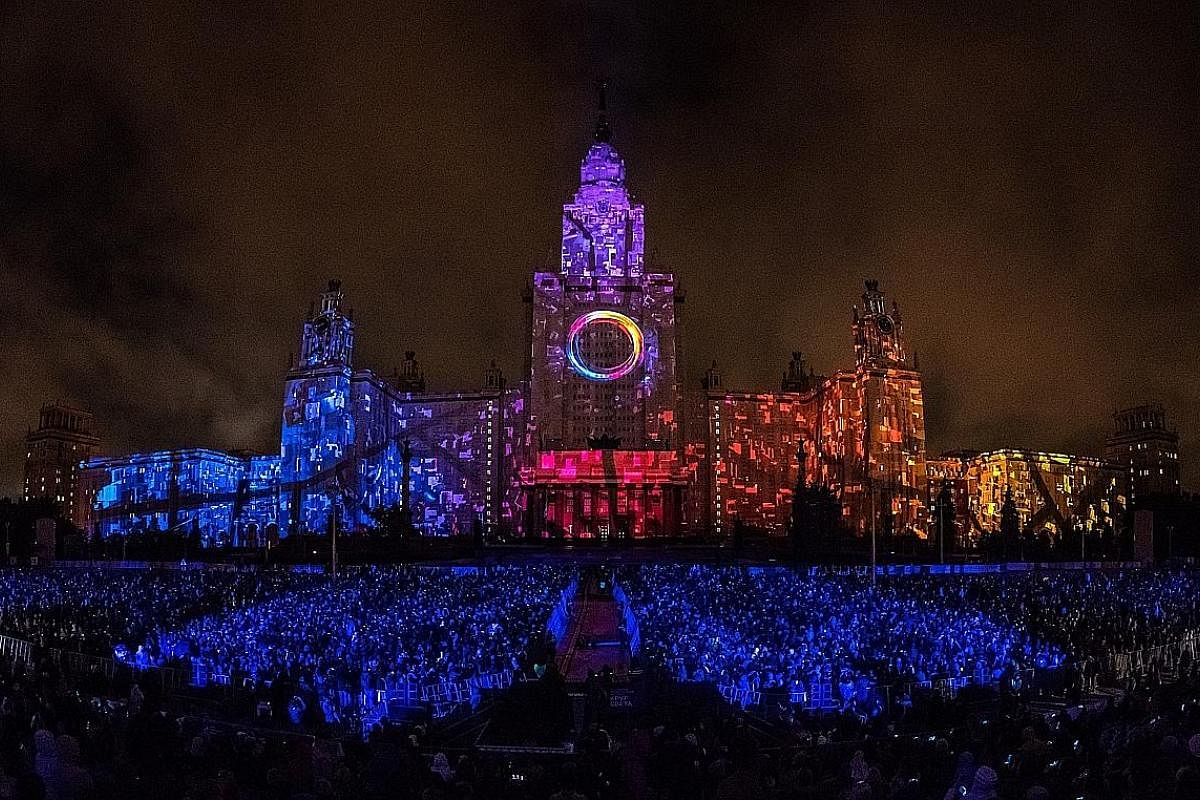

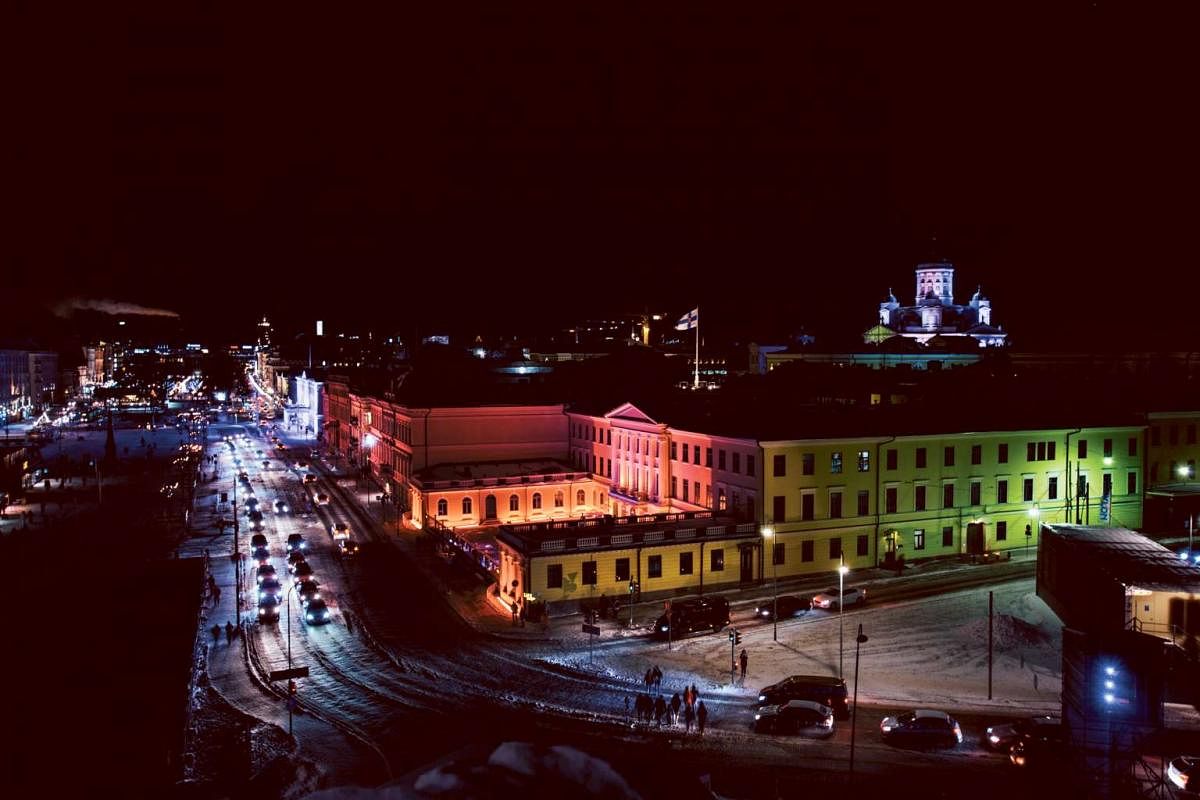


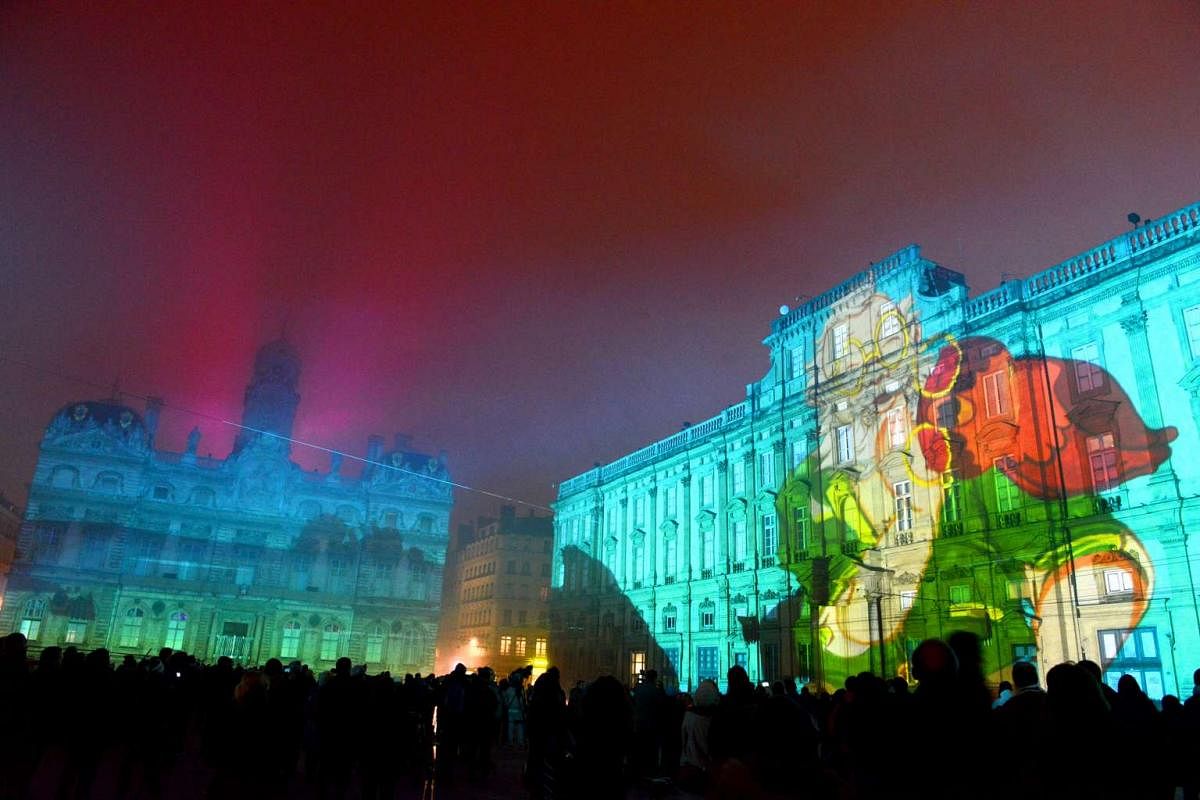
The future for light festivals is looking bright, with new ones being launched worldwide and existing ones gaining popularity.
Singapore's i Light Marina Bay, which started on Friday and runs till March 26, is in its fifth year. The event, which fills the Marina Bay promenade with light displays and installations, was originally scheduled to take place biennially.
It has become so popular that it was turned into an annual event after last year's edition, which drew about 742,000 visitors, up from 685,000 in 2014.
Festival director Jason Chen, who estimates about 30 per cent of attendees are tourists, says: "It's a reflection of how the festival has gained traction. It has good reach with our overseas visitors."
Light festivals in Sydney, Helsinki and Eindhoven saw record visitor numbers in their latest editions. Last year's Vivid Sydney attracted 2.31 million attendees, up from 1.7 million the year before.
Lux Helsinki saw half a million visitors and GlowEindhoven, 740,000. New festivals, including the Signal Festival in Prague, are capitalising on the growing interest. And it seems Singaporeans are contributing to the popularity of such light festivals.
Local travel agencies Dynasty Travel and Chan Brothers are seeing rising demand from Singaporeans for tours with light festivals on the itinerary.
Popular destinations include the Sydney light festival, which takes place yearly. Ms Joyce Tan, a marketing and communications executive at Chan Brothers, says: "Light festivals help to increase a city's appeal since many of them include interactive displays."
Ms Alicia Seah, director of marketing communications at Dynasty Travel, says such festivals can boost a country's tourism figures and receipts. "These festivals bring in participants from all around the world... such events could lift hotel rates by 15 to 30per cent," she says.
The Sunday Times highlights eight light festivals around the world worth checking out.
1) Circle of Light in Moscow, Russia

The Circle of Light festival (www.lightfest.ru/en) jump-starts its festivities each year with a brilliant fireworks display and an extravagant opening ceremony.
It sets the tone for the festival, which specialises in large-scale multimedia and light shows.
For five nights every year, the facades of some of Moscow's most iconic buildings are illuminated by sound and light projections.
Visitors can expect to see large- scale projections onto sites such as the Bolshoi Theatre and Moscow State University. The festival holds the Guinness World Record for having the largest projected image.
Measuring up to 50,458 sq m, the image was projected onto the front of the Moscow State University's main building during last year's festival.
Other popular shows include a seven-minute rendition of Swan Lake projected onto the Bolshoi Theatre's facade.
The festival also hosts an international video-mapping competition, where artists from around the world compete to produce the best projection mapping.
This year's edition will see eight venues used as canvases for the projection shows. The free festival will take place in late September.
2) Kobe Luminarie in Kobe, Japan

In the first half of December every year, thousands of visitors wait patiently in line to witness the lighting spectacle that is Kobe Luminarie (plus.feel-kobe.jp).
The event, which started as a memorial service for the victims of the Kobe earthquake in 1995, has been brought back every year due to overwhelming response and now attracts more than three million visitors each year.
Thousands of light-emitting diode lightbulbs are arranged in colourful installations that are erected in the Higashi Yuenchi Park in the city centre. These installations are designed and flown in from Italy - a tradition that originated from its first edition.
To keep things fresh, new designs are commissioned yearly. There were four large installations erected last year, including one that was strung overhead, creating the effect of a tunnel of lights.
To cater to the large crowds, the streets leading up to the event venue are closed to vehicles so visitors have to make their way on foot. The closest railway station is the Motomachi Station, a 10- minute walk from the venue.
Entry is free and visitors are encouraged to make a donation of 100 yen (S$1.20).
3) Lux Helsinki, Finland
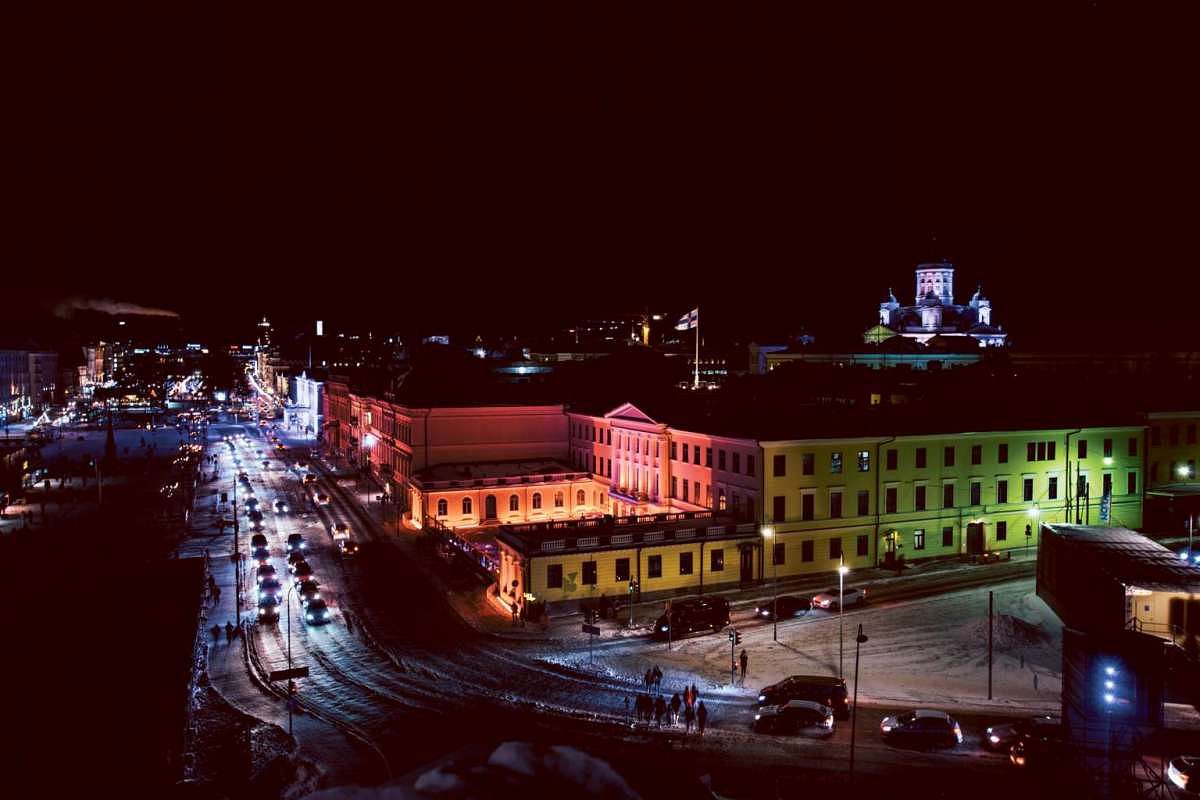
In Finland, January is notorious for being one of the darkest months of the year, with only about six hours of daylight every day.
To brighten up the city, Helsinki organises an annual light festival at the start of the month.
In its ninth year, Lux Helsinki (www.luxhelsinki.fi/en) features a slew of light installations, performances and other fringe activities.
This year's edition, held from Jan 5 to 9, featured 15 light art installations in the historical quarters of Finland's capital. A crowd favourite was the Cube light installation, which was an animation projected onto the facade of the iconic headquarters building of Stora Enso, a pulp and paper manufacturing giant.
With a specially composed soundtrack, the exhibit told the story of the nation's technological progress.
Other fringe activities included film screenings, an exhibition for the public to screen their own light art and an outdoor party.
The event attracted more than half a million people.
Most events are free and admission charges apply for some fringe activities. The programme for next year's event will be released on its website later in the year. Tickets can be bought online.
4) Glow Eindhoven, The Netherlands

Known as the City of Light, Eindhoven in the south of The Netherlands is home to electronics giant Phillips' first lightbulb factory. It is befitting then, for the city's annual light festival, Glow Eindhoven (www.gloweindhoven.nl/en), to focus on the science of light.
Apart from light installations by artists, the festival has a special showcase of innovative light art projects known as Glow Next projects. These works - the result of collaborations among artists, the tech industry and universities - will thrill science fans. Last year's projects saw the creation of a 100m-high lightning bolt which was generated by running high electrical currents through a thin copper wire.
The festival features about 30 installations located throughout the city and travellers can join walks conducted by guides from Eindhoven's Tourist Information office to view them.
Last year's festival drew 740,000 people, up from 730,000 the year before.
Glow Eindhoven is in its 11th year. This year's edition takes place from Nov 11 to 18, 6.30pm to midnight daily. All installations are free to view. Admission fees may apply for some fringe activities.
5) Australia
VIVID SYDNEY IN SYDNEY
Vivid Sydney (www.vividsydney.com) is held for 23 nights in May and June each year. The upcoming event takes place from May 26 to June 17. Apart from light installations and projections on landmarks such as the Sydney Opera House, there is a host of music shows and idea-sharing platforms taking place across the city. Most of the light shows and installations are free to visit. Fees apply to selected events.
In Singapore, Dynasty Travel and Chan Brothers offer packages that include the festival on the itinerary.
FIELD OF LIGHT, ULURU-KATA TJUTA NATIONAL PARK
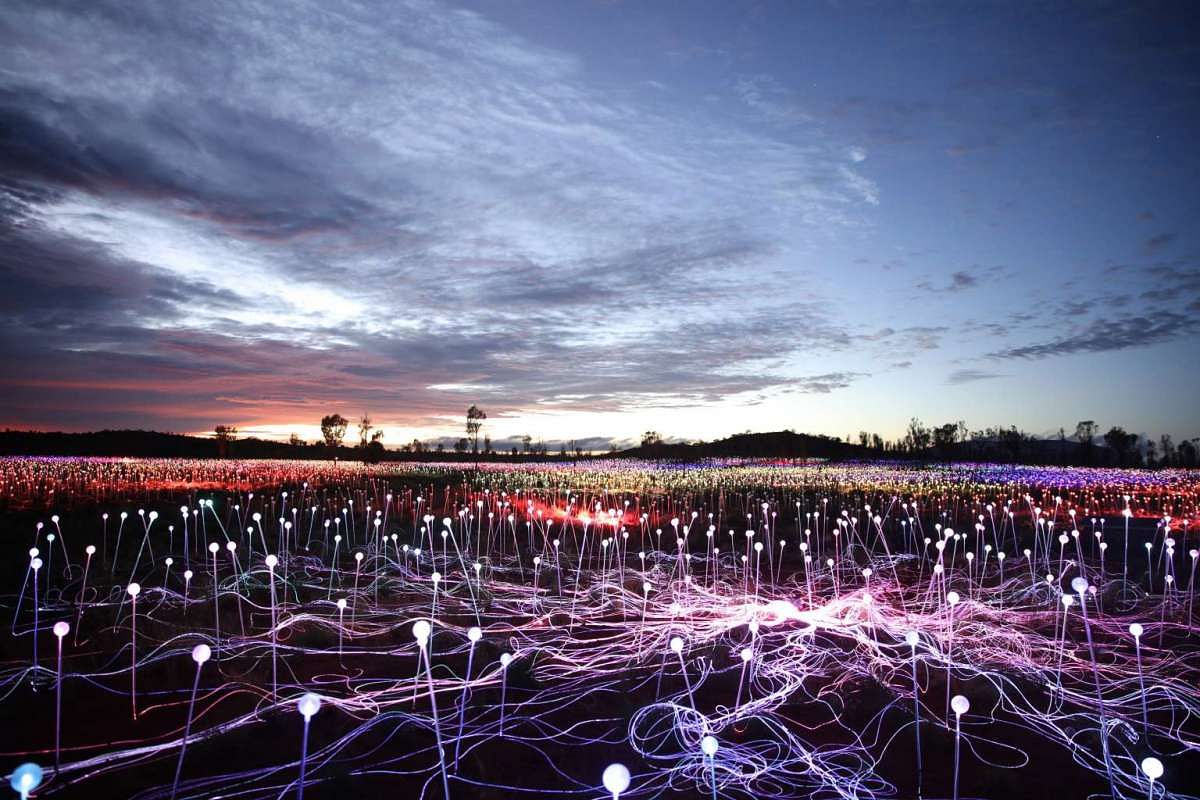
Come nightfall, the grandeur of sandstone monolith Ayers Rock is illuminated by thousands of pinpoint light fixtures.
This is part of a light art installation, Field Of Light, by British artist Bruce Munro. Fifty thousand "light pins" are installed over an area the size of four football pitches. When the sun sets, the installation lights up in shades of blue, purple, pink, red and yellow, reflecting the colours of the desert's sunrise and sunsets.
Visitors have to pre-book tours by Ayers Rock Resort (www.ayersrockresort.com.au). Prices start at A$35 (S$37.80) an adult.
6) Lumiere in Durham, the United Kingdom

Lumiere London festival, which saw a turnout of about one million visitors, the event is returning to Durham, from Nov16 to 19.
Organised by Artichoke, an arts charity in England that takes art to public spaces, Lumiere in Durham (www.lumiere-festival.com) is a biennial event that has been staged in the city in north-east England since 2009.
The charity occasionally hosts one-off events in other cities. Visitors to Lumiere can expect to be enthralled by about 30 light-based art installations located along the cobbled streets of the historical city.
Known for its beautiful landscapes and buildings, Durham drew more than 200,000 visitors in the festival's 2015 edition. Its mediaeval Durham Cathedral has also served as the backdrop for light shows, such as Crown Of Light, a sound and light show that was projected onto the Unesco World Heritage Site.
During the festival, much of the city's street lighting will be turned off to minimise electricity usage and facilitate better viewing of the exhibits.
While all artworks can be visited for free, during peak periods, there will be an entrance fee to the city centre, where about half the exhibits are located.
Visitors are encouraged to book their accommodation early.
7) Festival of Lights in Lyon, France

The city of Lyon has a long history of illuminating its streets with lights, so when it comes to light festivals, it goes all out.
For the annual Festival of Lights held in early December each year (www.fetedeslumieres.lyon.fr/en), 70 to 80 light installations and projections illuminate the French city during the four-day festival.
The art-centric event, which attracts about three million visitors every year, features artworks by both local and international artists.
To keep things fresh, no artworks are repeated, although the creations may find their way to other light festivals around the world.
Locals add to the city's illuminations by placing lit candles on their windowsills on Dec 8.
The tradition began in the 1800s, when the locals decided, as a city, to celebrate the conception of the Virgin Mary by placing candles on their windowsills. For most locals, Dec 8 still remains the most important day of the festival.
In keeping with the festival's spirit of solidarity, a fund-raising event is also held on the first day of the event. Residents and visitors are encouraged to purchase candles that will be used as part of a large light art piece.
Events are free.
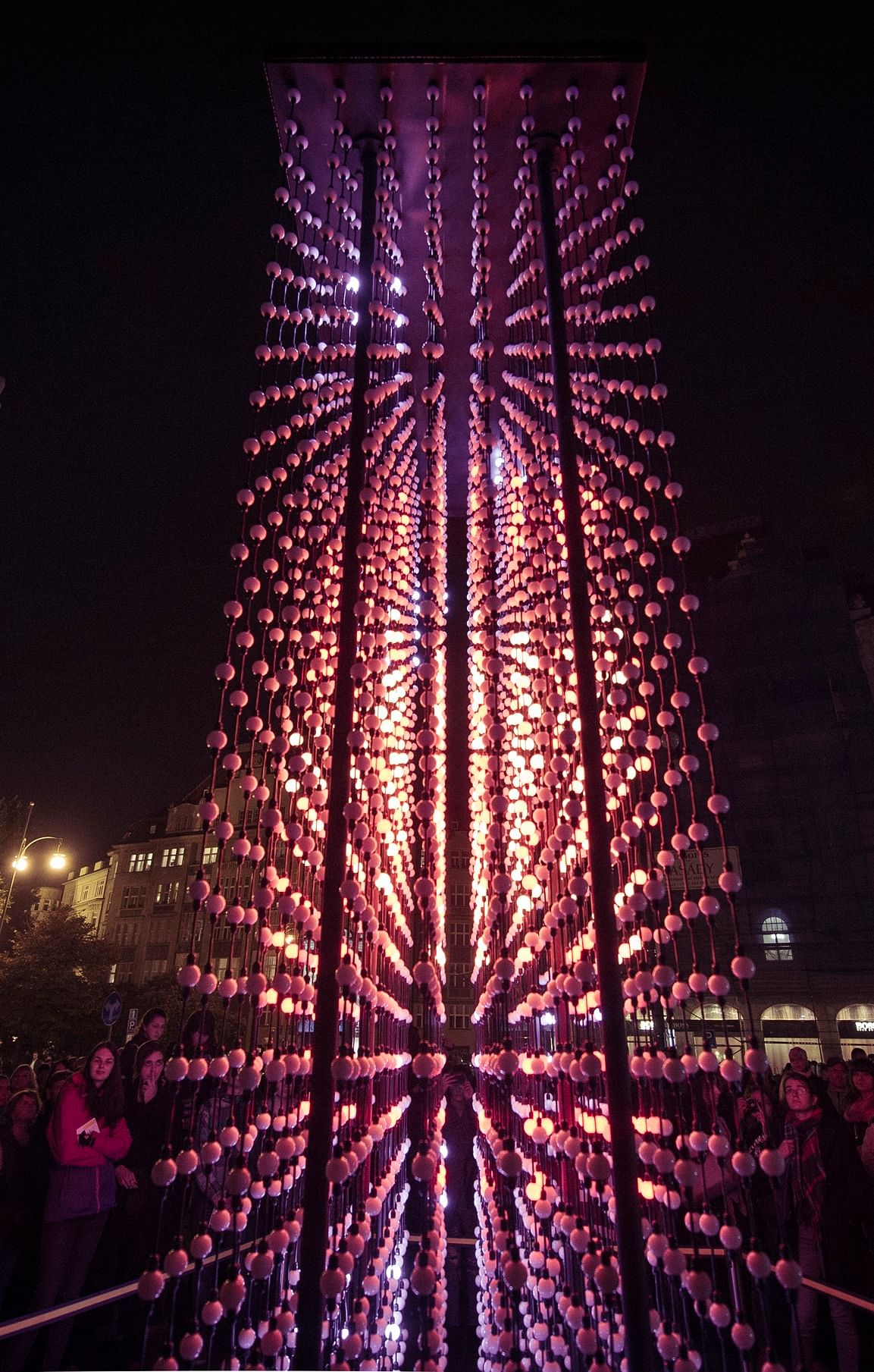
8) Signal Festival in Prague, Czech Republic
A relatively new addition to the light festival scene, the Signal Festival (www.signalfestival.com) in Prague has become the most popular cultural event in the Czech Republic since debuting in 2013.
The four-day festival features about 20 light-art installations by Czech and international artists.
All the works are presented for the first time during the festival and artists can participate only once every three years.
A favourite from last year's exhibition was Monolith. Created by Czech studio Hyberbinary, the light installation was constructed using more than 3,000 light-emitting diodes and is capable of displaying every colour of the colour spectrum.
Visitors can also look out for dance performances, projection shows and other audio-visual performances.
A particular favourite among guests is the Signal Dome. Visitors stand inside this large spherical theatre to enjoy images, shapes and lights which are projected above and around them.
Most performances and light installations are free.
During peak periods, traffic is restricted in the city centre, so visitors are encouraged to make their way by foot around the installations.
This year's Signal Festival will be held from Oct 12 to 15.
Join ST's Telegram channel and get the latest breaking news delivered to you.
A version of this article appeared in the print edition of The Sunday Times on March 05, 2017, with the headline Chasing the lights at festivals around the globe. Subscribe

